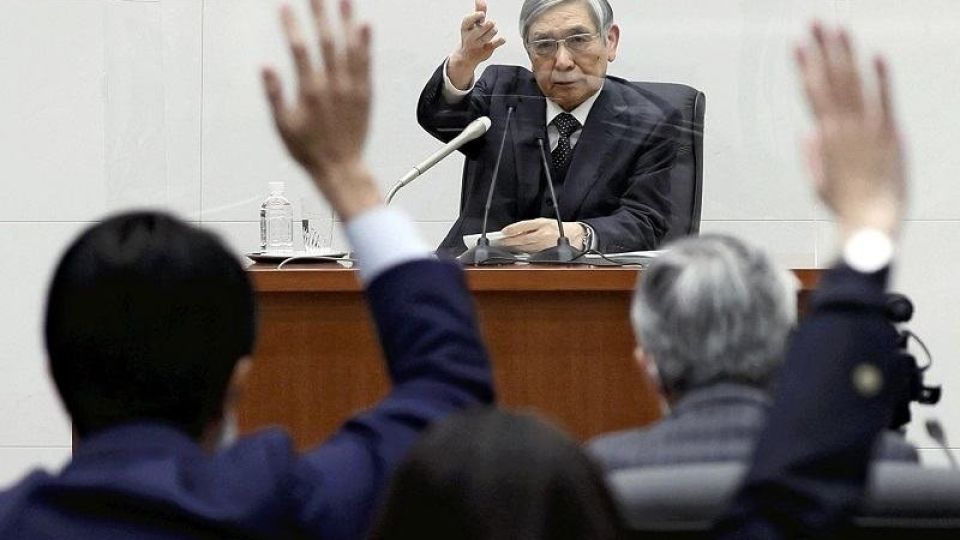December 22, 2022
TOKYO – Next spring will mark 10 years since the Bank of Japan adopted its unprecedented monetary easing policy. On Tuesday, the central bank expanded the range of fluctuation in long-term Japanese government bonds because there have been distortions in financial markets due to the prolonged period of massive monetary easing.
The markets had put pressure on the BOJ to modify its yield curve control policy, as one of its side effects has been the dwindling of financial transactions in Japan.
While effectively raising interest rates, Bank of Japan Gov. Haruhiko Kuroda denied any monetary tightening was being conducted and emphasized the continuation of the easy monetary policy.
“Today’s step is positive for the economy,” Kuroda said Tuesday, repeatedly emphasizing that the latest policy revision is a continuation of its large-scale monetary easing.
In financial markets, however, long-term interest rates surged after the BOJ’s policy revision announcement. The market yield on newly issued 10-year JGBs, which had been hovering at around 0.25% — the previous upper limit set by the BOJ — rose to as high as 0.46%, the highest level in seven years and five months, since July 2015, and near the revised limit of 0.5%.
The rise in market interest rates will also affect corporate financing and housing loans to individuals. Major lenders might raise mortgage rates as soon as January, especially for fixed-rate loans, which are susceptible to the impact of long-term interest rates.
If the cost of borrowing rises, companies and individuals will become more cautious about capital investment and consumption due to the increased interest burden.
Kuroda, however, said that the revision this time is “not at all intended to raise interest rates or tighten credit.”
Skeptics abound
Market players, however, are skeptical of Kuroda’s explanations.
“This is a actually correction of excessive easing and a step toward normalization,” said monetary policy expert Izuru Kato, the president and chief economist of Totan Research Co.
At the central bank, Shinichi Uchida, an executive director who leads the BOJ’s monetary affairs department, explained in a Diet session in May this year that “expanding the range of fluctuation is in effect raising interest rates.”
In September, Kuroda also showed his recognition that such a move would be negative for monetary easing and was cautious about expanding the upper limit of long-term interest rates.
With the rapid interest rate hikes by central banks in the United States and other Western countries, however, Japan’s long-term interest rates have exceeded the 0.25% ceiling at times since this spring. The central bank has kept the interest rates low, while continuing outright purchases of large amounts of JGBs, resulting in an unusual situation where the BOJ held just over half of all JGBs at the end of September.
By expanding the ceiling, the BOJ can hold down its JGB purchases. It looks like the BOJ was forced to make the decision to revise its yield curve under such market pressure.
Awkward explanations
“If needed, we will expand monetary easing without hesitation,” Kuroda said at the press conference Tuesday, citing the uncertain outlook of overseas economies, including a business slump caused by the U.S. and European interest rate hikes and the slowdown of the Chinese economy due to the COVID-19 crisis.
Kuroda awkwardly emphasized monetary easing while at the same time accepting a rise in market interest rates.
Although inflation in Japan shows signs of approaching 4%, Kuroda gave this assessment: “We haven’t been in a situation yet where we can achieve the price stability target of 2% in a stable manner, which will be supported by rising wages.”
“The Bank of Japan has a deep-rooted fear of deflation and a strong yen,” said Mari Iwashita, a chief market economist at Daiwa Securities Co.
Next governor?
Kuroda’s term of office as governor expires April 8, 2023. The central bank’s monetary easing, which involves its outright purchase of government bonds on an unprecedented scale, has been continuing since immediately after Kuroda assumed the post. In financial markets, much attention is being paid to who will be selected as the next BOJ governor, as it might give hints to the future course of Japan’s monetary policy.
Among the names mentioned as possible successors are Hiroshi Nakaso, a former deputy BOJ governor; Masayoshi Amamiya, a current deputy BOJ governor; and Masatsugu Asakawa, president of the Asian Development Bank and a former senior official of the Finance Ministry.
The latest policy revision might even rectify market distortions and lessen the criticism against the BOJ’s continued monetary easing.
“Selecting someone close to Kuroda has become easier,” said Takahide Kiuchi, an executive economist of Nomura Research Institute, Ltd. who is a former member of the central bank’s policy board.

